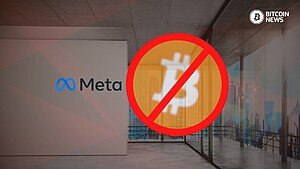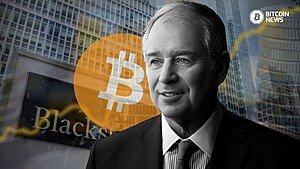In a recent report, JPMorgan Chase & Co strategists led by analyst Nikolaos Panigirtzoglou, shed light on a significant shift in investor sentiment towards Bitcoin and gold. The analysis provided by the financial giant unveils intriguing insights into the dynamics between these two alternative assets, particularly in the context of ETFs (Exchange-Traded Funds).
Nikolaos Panigirtzoglou Discusses Investor Preference
Contrary to some speculations, JPMorgan’s findings suggest that traditional gold investors are not swiftly transitioning to Bitcoin amidst the digital asset’s meteoric rise. Instead, both institutional and retail investors have been actively diversifying their portfolios by investing in both gold and Bitcoin.
The analysts led by Nikolaos Panigirtzoglou noted:
“Private investors and individuals have propagated both gold and bitcoin year-to-date rather than shifting from the former to the latter.”
ETF Success: Bitcoin’s Triumph Over Gold
One of the standout revelations from JPMorgan’s reports is the overwhelming success of Bitcoin ETFs, which have surpassed gold in terms of investor portfolio allocation. Adjusting for volatility, bitcoin’s allocation now stands at 3.7 times greater than that of gold. This achievement highlights the effectiveness and triumph of ETFs.
The analysis shows a “sharp position build-up since February of $7b in bitcoin futures and $30b in gold futures.”
Related reading: Unrealistic for Bitcoin to Match Gold’s Investor Allocation: JPMorgan
Speculative Rally: Retail and Institutional Influence
JPMorgan’s analysis attributes the recent surge in bitcoin’s value to a combination of retail and speculative institutional investors. These groups, along with momentum traders, have been driving money into both gold and bitcoin futures, highlighting a broader trend of diversification rather than outright migration from gold to bitcoin.
“Beyond retail investors, speculative institutional investors such as hedge funds including momentum traders such as CTAs appear to have also propagated the rally by buying both gold and bitcoin futures since February, perhaps more heavily than retail investors” the report elucidated.
ETF Flows and Market Dynamics
According to JPMorgan, despite initial speculations suggesting a significant shift from gold to Bitcoin, the actual data paints a different picture. Outflows from gold ETFs have indeed occurred, but JPMorgan suggests that these funds are not necessarily flowing into Bitcoin ETFs. Instead, investors are opting for physical gold, emphasizing privacy and tangibility in the wake of the pandemic. Bitcoin ETFs are thriving, but JPMorgan suggests a trend reversal from gold. Investors are trading their digital asset holdings for ETFs, backed by $7 billion in outflows from exchanges post-ETF launch.
“In other words, it is more likely that the net flow from retail investors into the newly created ETFs is closer to $2 billion,” analysts said.
The report adds:
“This [gold ETF] outflow trend does not reflect an aversion to gold by private investors such as individuals and family offices, but rather an instrument shift away from physical gold ETFs to bars and coins […] Privacy and tangibility have become more important considerations for private investors since the pandemic, and physical gold ETFs have a disadvantage in this respect relative to holding bars and coins.”
MicroStrategy’s Role and Market Risks
The involvement of companies like MicroStrategy, which have been aggressively accumulating bitcoin, has added further momentum to the digital asset’s rally. However, JPMorgan warns that such actions could potentially amplify market froth and leverage, posing risks of severe deleveraging in the future.
“We believe the debt-funded bitcoin purchases by MicroStrategy add leverage and froth to the current crypto rally and raise the risk of more severe deleveraging in a potential downturn in the future,” the report cautioned.
Conclusion: A Nuanced Perspective
In conclusion, JPMorgan’s reports offer a nuanced perspective on the evolving relationship between Bitcoin and gold. The report highlights that while Bitcoin ETFs have undoubtedly gained traction, the broader market dynamics suggest a more complex scenario where investors are diversifying their holdings across both assets.
It suggests that as the bitcoin market continues to evolve, it remains imperative for investors to assess the risks and opportunities presented by both bitcoin and gold with careful consideration. The bank warned that there is a high likelihood of mean reversion, indicating that both assets may regress towards their typical levels. Additionally, a significant liquidation event, totaling $270.69 million according to Coinglass data, mainly from long positions in the last 24 hours, further impacts BTC’s price decline.

With insights from industry experts and market data, JPMorgan’s analysis provides another perspective into the ongoing evolution of the digital asset landscape.
In a rapidly changing financial landscape, staying informed and adopting a diversified approach to investment remains key to navigating the complexities of modern markets.










